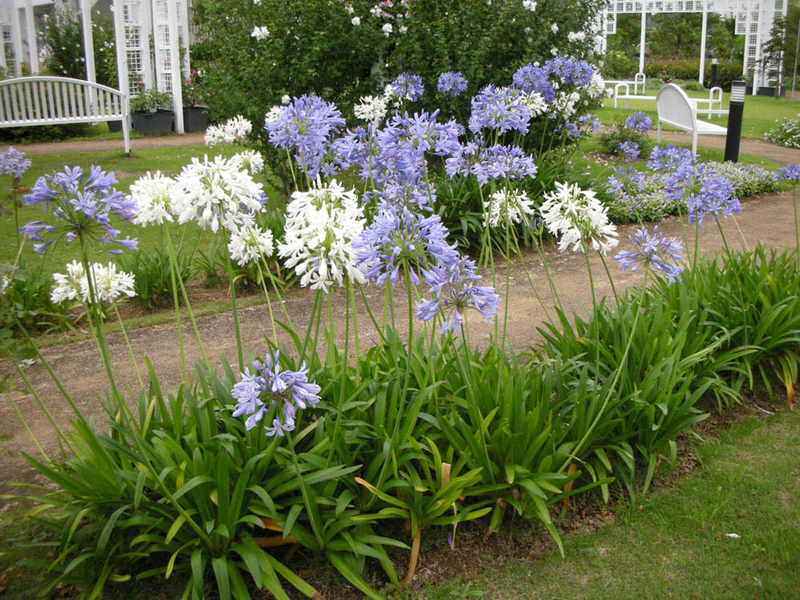Agapanthus Care Tips for Lush and Vibrant Flowers
Agapanthus Care Tips for Lush and Vibrant Flowers
Blog Article
Understanding the Art of Agapanthus Treatment: Necessary Steps for Healthy Growth and Lively Flowers
In the realm of cultivation, the cultivation of agapanthus stands as a fulfilling undertaking for those who seek to support these sophisticated blooming plants. With their striking flowers and graceful vegetation, agapanthus has captured the attention of garden enthusiasts worldwide. However, achieving optimum development and vivid blooms needs a nuanced approach that incorporates different important steps. From selecting the best range to grasping trimming strategies, the trip towards growing growing agapanthus plants is multifaceted and holds the vital to unlocking the complete potential of these organic gems.

Picking the Right Agapanthus Variety

When choosing the ideal Agapanthus selection for your yard, take into consideration variables such as environment viability, bloom shade, and development habit. Agapanthus, typically referred to as Lily of the Nile or African lily, is available in a range of colors ranging from shades of purple and blue to white. Pick a blossom shade that matches your existing garden palette to create a harmonious landscape. Furthermore, think about the climate in your region to make certain the Agapanthus selection you choose can flourish in your details problems. Some selections are extra forgiving of cool temperatures, while others favor warmer environments. Recognizing the development practice of different Agapanthus selections is critical for correct placement within your yard. Some varieties have a clumping development behavior, suitable for containers or boundaries, while others have an even more spreading nature, ideal for ground cover or mass growings. By thoroughly reviewing these factors, you can pick the best Agapanthus variety to boost the appeal of your garden.
Perfect Planting Conditions
Considering the ideal ecological demands is essential for successful Agapanthus farming. Agapanthus flourishes in well-draining dirt with a slightly acidic to neutral pH level. When growing, choose a place that obtains full sunshine to partial color. In hotter environments, providing some afternoon color can prevent scorching of the fallen leaves. Agapanthus plants are delicate to cold temperatures and ought to be shielded from frost during cold weather.
To guarantee healthy growth and vivid flowers, plant Agapanthus bulbs at a deepness of about 2-4 inches and space them 8-12 inches apart. Mulching around the base of the plants helps preserve wetness and reduces weed growth.
Watering and Feeding Tips
Preserving appropriate dampness levels and giving crucial nutrients are crucial elements in the treatment program for Agapanthus plants. When it concerns watering Agapanthus, it is crucial to strike an equilibrium. These plants prefer regularly wet soil however are prone to root rot if overwatered. Throughout the expanding season, water deeply when a week, ensuring the dirt is well-draining to stop waterlogging. In hotter climates or throughout periods of dry spell, even more regular watering may be needed to maintain the dirt evenly wet. However, lower watering in the winter to avoid water logged problems.
Feeding Agapanthus is important for advertising healthy and balanced development and prolific blossoms. Use a balanced fertilizer, such as a 10-10-10 formula, in the very early spring as brand-new development arises. By following these watering and fertilizing tips, you can ensure your Agapanthus plants grow and produce dynamic, durable blooms.
Pruning Methods for Agapanthus
Trimming Agapanthus plants at the ideal times and with proper techniques is essential for maintaining their health and promoting ideal growth and blooming. The perfect time to trim website here Agapanthus is in late winter months or very early springtime before new growth emerges.
Deadheading spent blossoms can likewise redirect the plant's power right into producing more flowers rather than establishing seeds. If you desire to gather seeds for proliferation, leave some flowers to completely dry and fully grown on the plant.
Bear in mind to make use of clean, sharp tools to make exact cuts and minimize the risk of introducing illness. Agapanthus. Routine trimming will certainly help maintain your Agapanthus looking cool and healthy and balanced while making sure a bountiful display screen of gorgeous blooms
Dealing With Typical Parasites and Conditions
After making certain proper trimming strategies for visit our website Agapanthus, it is important to address typical insects and illness that can impact the health and vigor of these plants. Agapanthus plants are typically durable but can still succumb particular problems. One common insect that influences Agapanthus is the Agapanthus gall midget. This little, orange fly lays its eggs in the vegetation, bring about altered growth and flower buds that fall short to open. To battle this pest, trim and ruin any affected plant parts and consider using insecticidal soap.
Additionally, Agapanthus plants can suffer from root rot if they are grown in improperly draining pipes dirt. By being attentive and taking timely action versus parasites and illness, you can help your Agapanthus plants thrive and create vivid flowers. Agapanthus.

Final Thought
Finally, grasping the art of agapanthus care involves choosing the appropriate range, giving ideal growing conditions, correct watering and fertilizing, suitable pruning techniques, and dealing with common pests and diseases. By adhering to these important actions, you can make sure healthy growth and dynamic flowers for your agapanthus plants. useful reference Remember to frequently keep track of and keep your plants to promote their overall well-being and long life.
To make sure healthy and balanced development and dynamic flowers, plant Agapanthus light bulbs at a depth of regarding 2-4 inches and space them 8-12 inches apart. By adhering to these watering and feeding ideas, you can guarantee your Agapanthus plants flourish and generate lively, long-lasting blossoms.
One typical bug that influences Agapanthus is the Agapanthus gall midget. In addition, Agapanthus plants can suffer from root rot if they are planted in badly draining dirt. By adhering to these necessary steps, you can make sure healthy and balanced development and dynamic blooms for your agapanthus plants.
Report this page